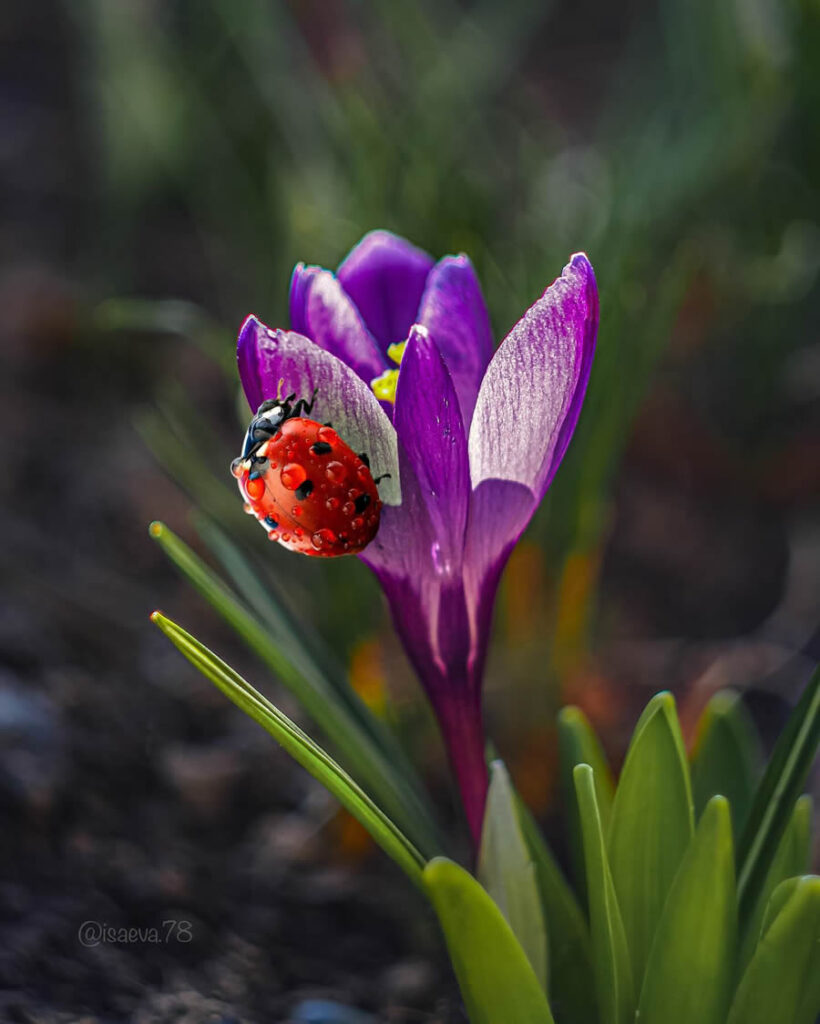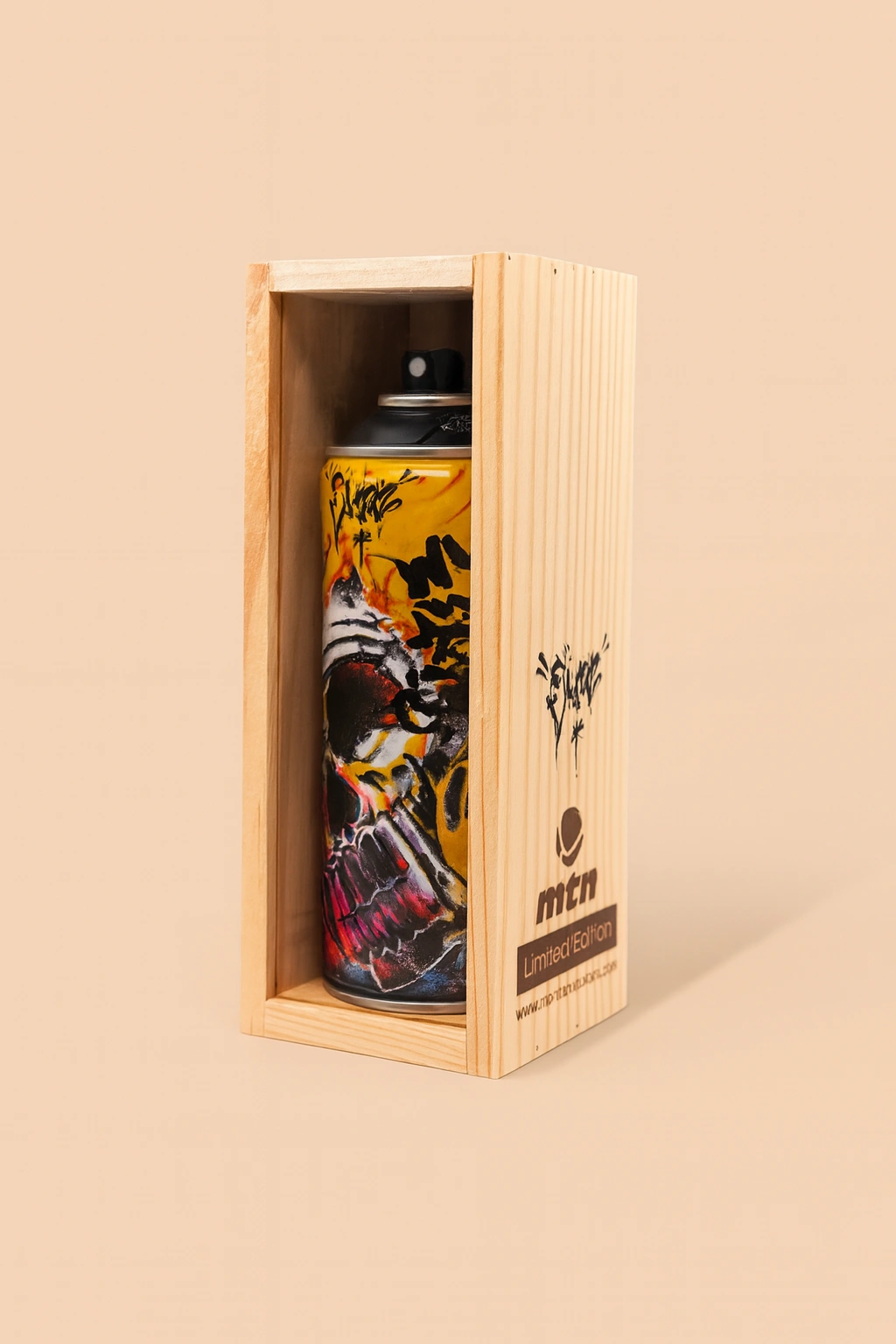Macro photography is a genre that invites viewers to enter a world of minute details and overlooked beauty. It transforms the mundane into the magnificent, revealing intricacies that often go unnoticed by the naked eye. In this realm, Russian photographer Maria Isaev has established herself as a formidable talent, creating images that not only stun with their visual impact but also provoke contemplation about the natural world. Her recent series on ladybugs is a testament to her mastery of this medium. In these photos, Isaev captures the delicate interplay of light, color, and texture that make these tiny creatures appear almost otherworldly.
But what sets Isaev’s work apart from the plethora of macro photographers out there? It’s not just the technical proficiency or the choice of subject matter—both of which are undeniably strong. Rather, it’s the way she uses macro photography as a form of visual storytelling, highlighting the symbolic weight of these diminutive creatures. Ladybugs, in Isaev’s lens, become more than mere insects; they are ambassadors of the natural world, evoking themes of fragility, resilience, and interconnectedness. This critical exploration delves into Isaev’s artistic approach, the technical aspects of her work, and the broader cultural implications of her photography.
Crafting a New Perspective on the Natural World
From the moment one encounters Isaev’s images, it is clear that she possesses a distinctive aesthetic sensibility. Her photographs of ladybugs are marked by an ethereal quality that elevates them beyond the typical macro shot. The use of shallow depth of field isolates the subject, causing the ladybug to emerge from the blurred background like a gem set against a soft, luminous canvas. This effect not only draws attention to the intricacies of the insect’s form—its minuscule legs, the subtle curvature of its shell—but also imbues the image with a sense of reverence, as if the ladybug is a precious artifact.
Isaev’s choice of color further enhances this impression. Her palette is often dominated by rich, saturated tones: deep reds that contrast sharply with the greens and browns of leaves and foliage. These vibrant hues are not only visually arresting but also serve a symbolic function. Red, traditionally associated with vitality and intensity, contrasts with the fragile existence of the ladybug, whose lifespan and size make it one of the more vulnerable creatures in the ecosystem. This juxtaposition between strength and vulnerability is a recurring theme in Isaev’s work, and it lends her images a sense of poignancy that transcends the purely visual.
Additionally, Isaev often uses natural elements like dew drops or flower petals to create a sense of scale. In one particularly striking photograph, a ladybug perches on a blade of grass, a single drop of dew hanging precariously off the tip. The dew drop, much larger than the ladybug’s head, reflects a distorted image of the surrounding environment, creating a miniature world within a world. This kind of composition underscores the interconnectedness of all things, a theme that resonates throughout Isaev’s portfolio. Each photograph, therefore, is not just a study of a single insect but a meditation on the delicate balance of nature.
Mastering the Art of Macro
Behind every beautiful photograph lies a web of technical decisions that determine its success. In the case of Isaev’s ladybug series, her technical prowess is evident in the precision of her focus, the quality of her lighting, and her command of post-processing techniques. Macro photography, by its very nature, presents a unique set of challenges. Depth of field is notoriously shallow, making it difficult to keep even the smallest subject in focus. Yet, Isaev navigates this limitation with remarkable skill, ensuring that each image has a crisp, almost tactile quality.
One of the hallmarks of Isaev’s style is her use of natural light. Instead of relying on artificial lighting setups, she harnesses the gentle illumination of early mornings or late afternoons. This choice not only enhances the colors of her subjects but also avoids the harsh shadows and highlights that can mar macro photographs. The result is an even, diffused light that caresses the ladybug’s glossy shell, accentuating its textures without overwhelming the viewer.
Isaev’s choice of equipment also plays a crucial role in her ability to capture such intricate details. She uses a dedicated macro lens, typically one with a high magnification ratio, which allows her to fill the frame with the tiniest of subjects. This, combined with a steady hand and careful attention to her camera’s settings, ensures that each photograph is as sharp as it is evocative. Post-processing is handled with a similarly light touch. Isaev enhances her images subtly, adjusting contrast and saturation to make the colors pop without straying into unnatural territory. This restraint demonstrates her respect for her subjects and her commitment to portraying them as authentically as possible.
The Ladybug as a Cultural and Ecological Icon
Ladybugs have long been symbols of luck, protection, and good fortune in various cultures around the world. In Isaev’s work, however, they take on an even deeper significance. By focusing her lens on these small creatures, she invites viewers to reconsider their place in the natural hierarchy. The ladybug, often considered a benign presence in gardens, becomes a protagonist in Isaev’s visual narrative, embodying both the beauty and fragility of the natural world.
Moreover, the ladybug’s role as a natural pest controller—feeding on aphids and other harmful insects—adds another layer of meaning to Isaev’s photographs. In an age when ecosystems are increasingly under threat from human activity, the ladybug stands as a reminder of nature’s inherent capacity for balance and self-regulation. This ecological dimension is subtly reinforced in Isaev’s compositions, which often include hints of the ladybug’s environment: a torn leaf here, a fading flower petal there. These elements, though understated, hint at the broader environmental context in which the ladybug exists, making the viewer acutely aware of the fragility of its habitat.
There is also an anthropomorphic quality to Isaev’s portrayal of ladybugs. By capturing them at close range, she reveals the nuances of their behavior—the way they delicately navigate a leaf’s surface, the meticulous manner in which they clean their antennae. These moments, frozen in time, endow the ladybugs with a personality, transforming them from anonymous insects into relatable characters. This humanization of her subjects is not merely a photographic gimmick; it serves a deeper purpose. By eliciting empathy for these tiny creatures, Isaev subtly advocates for a more compassionate and sustainable relationship with nature.
Photography as Advocacy
In the context of contemporary photography, Isaev’s work occupies an interesting niche. Macro photography is often seen as a technical exercise, a way to explore the boundaries of equipment and technique. However, Isaev’s ladybug series transcends these limitations, positioning itself as a form of visual advocacy. By portraying the ladybug in such a reverential light, she challenges the viewer to consider the importance of even the smallest organisms in the ecological web.
This is particularly significant given the current state of environmental affairs. As insect populations decline globally due to habitat loss, climate change, and pesticide use, Isaev’s photographs take on a sense of urgency. They are not merely aesthetic objects but calls to action, urging viewers to appreciate—and ultimately protect—the delicate beauty of the natural world. In this way, Isaev’s work aligns with a broader movement within the photographic community, one that seeks to use imagery as a tool for environmental education and activism.
Furthermore, Isaev’s focus on ladybugs—creatures that are often overlooked or taken for granted—serves as a reminder of the interconnectedness of all living things. Her photographs make a compelling case for the idea that no species is too small or insignificant to warrant our attention. By celebrating the ladybug’s unique qualities, Isaev encourages a deeper appreciation for biodiversity and the roles that various species play in maintaining ecological balance.
Impression
In Maria Isaev’s hands, the camera becomes more than just a device for capturing images—it is a means of transforming our perception of the world. Her ladybug series exemplifies the potential of macro photography to illuminate the unseen and to reveal the extraordinary within the ordinary. Through her meticulous compositions, expert use of light, and thoughtful engagement with her subjects, Isaev has created a body of work that is as intellectually stimulating as it is visually captivating.
In a time when grand gestures and sweeping landscapes often dominate the conversation around nature photography, Isaev’s focus on small subjects feels like a quiet revolution. Her ladybugs, with their jewel-like exoskeletons and delicate limbs, command attention not through their size but through their undeniable presence. They remind us that sometimes, the most profound stories are found in the tiniest of details. For anyone willing to look closely, Isaev’s photographs offer a glimpse into a world that is as complex and beautiful as any grand vista—a world where even the smallest creature holds the power to inspire wonder and awe.
No comments yet.








